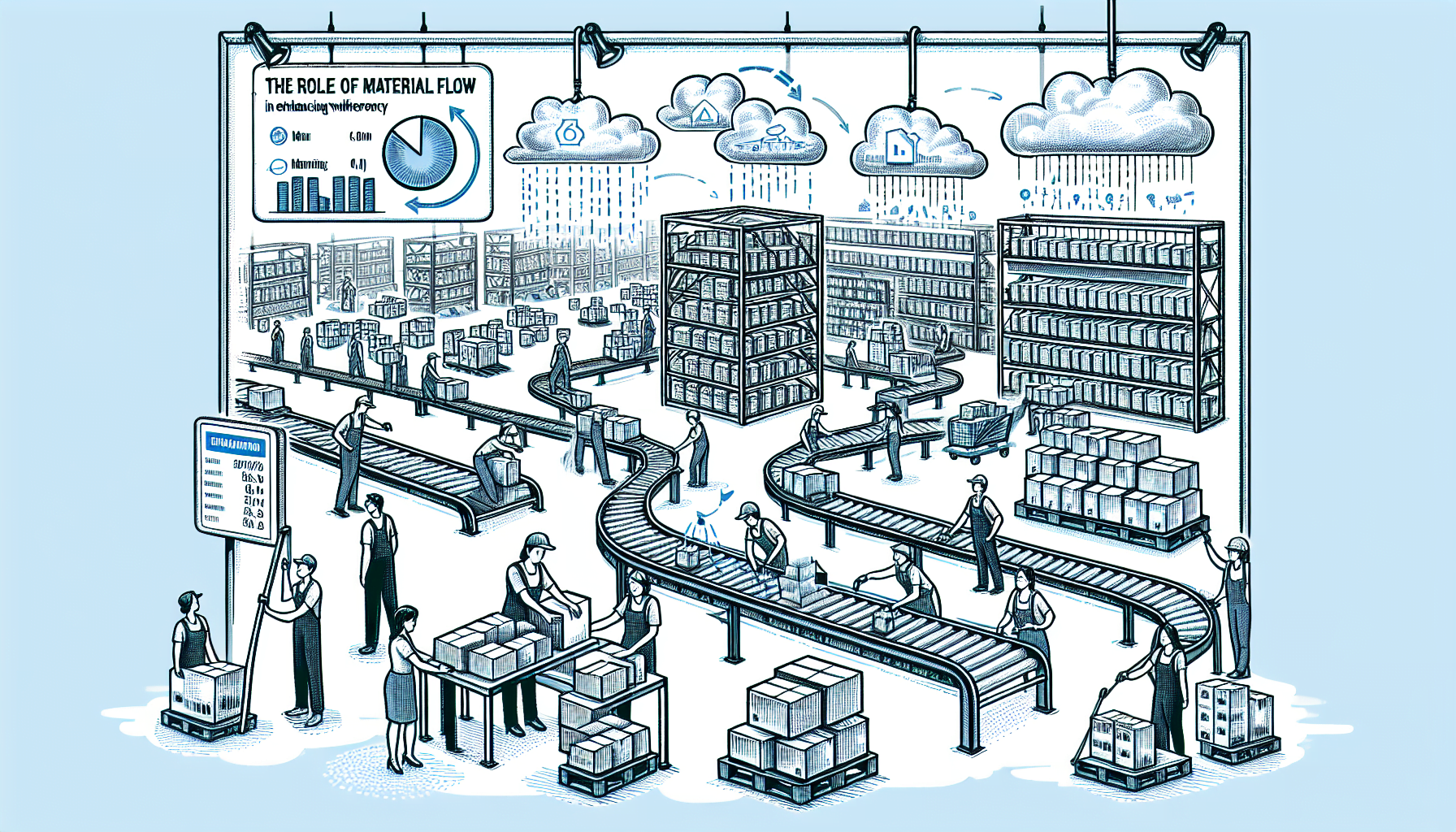Warehouse efficiency is a critical factor for businesses looking to streamline their operations and maximize productivity. One key element that greatly influences warehouse efficiency is the management of material flow. Material flow refers to the movement and handling of goods and products within a warehouse facility. When managed effectively, it can significantly enhance safety, productivity, and cost-effectiveness within the warehouse.
The Importance of Efficient Material Flow
Efficient material flow is vital for warehouses to operate smoothly and meet customer demands. By optimizing the movement of goods from receiving to storage, picking, packing, and shipping, warehouses can minimize wait times, reduce errors, improve order fulfillment rates, and ultimately boost customer satisfaction.
An efficient material flow system ensures that goods are organized and accessible, making it easier for warehouse staff to locate and retrieve items quickly. This reduces the time spent searching for products, leading to improved order picking efficiency. Implementing effective material flow strategies can also reduce the risk of damage to goods during handling, as well as prevent inventory obsolescence by ensuring that products move at an optimal pace through the warehouse.
An effective material flow system also plays a significant role in optimizing warehouse space utilization. By strategically arranging storage areas, racking systems, and picking zones, warehouses can maximize their storage capacity and minimize wasted space. This allows for the accommodation of a larger volume of goods and efficient picking and replenishment processes.
The Benefits of Material Flow Evaluation
To achieve efficient material flow, warehouse managers need to conduct regular evaluations to identify areas for improvement. Material flow evaluation involves analyzing the current workflow, identifying bottlenecks and inefficiencies, and implementing strategies to optimize the flow of goods.
One key advantage of conducting material flow evaluations is the ability to identify and eliminate sources of waste. This can include excessive travel distances, unnecessary handling steps, poor storage layouts, and inefficient picking paths. By addressing these issues, warehouses can streamline their operations, reduce unnecessary costs, and improve overall efficiency.
An optimized material flow system can also enhance workplace safety. By evaluating the movement of goods and identifying potential hazards or ergonomic issues, warehouses can implement measures to ensure the well-being of their employees. This can include implementing proper lifting techniques, providing appropriate training, and utilizing safety equipment to prevent accidents and injuries.
Another benefit of material flow evaluation is improved order accuracy. By carefully analyzing the flow of goods, warehouses can identify potential points of errors, such as misplacements or mispicks. Implementing effective labeling and tracking systems, as well as utilizing automation technologies, can significantly reduce order inaccuracies, leading to higher customer satisfaction rates.
Implementing an efficient material flow system requires expertise and knowledge of warehouse operations. This is where companies like HCO Innovations can provide valuable assistance. HCO Innovations specializes in warehouse optimization solutions, including material flow evaluation. They have a team of experienced professionals who can assess your current material flow system, identify areas for improvement, and provide customized strategies to enhance your warehouse efficiency.
By partnering with HCO Innovations, you can benefit from their expertise and industry-leading solutions to streamline your warehouse operations. Their holistic approach focuses on safety, productivity, efficiency, and cost-effectiveness, helping you achieve optimal material flow and maximize your warehouse’s potential.
If you want to learn more about material flow evaluation and how HCO Innovations can help you optimize your warehouse, please visit their material flow evaluation page for more information.

